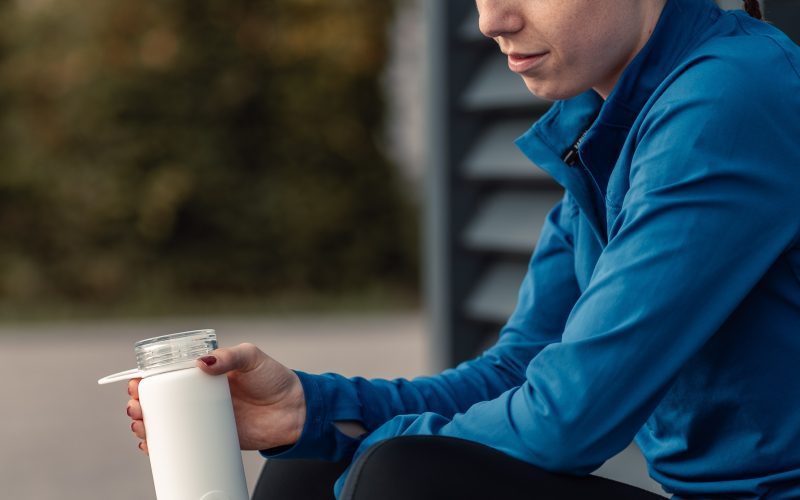Are you tired of spending hours at the gym with little to no visible results? Look no further than HIIT, or high-intensity interval training! This powerful workout technique has taken the fitness world by storm and for good reason. From boosting metabolism and burning fat to improving cardiac health, there’s a lot that goes into understanding the science behind HIIT. In this blog post, we’ll delve into what makes HIIT so effective and why it should be your go-to workout routine. Get ready to sweat it out and transform your body like never before!
What is HIIT?
High intensity interval training, or HIIT, is a type of exercise that alternates between short bursts of high-intensity activity and periods of rest. This type of workout has been shown to be more effective at burning fat and improving fitness than traditional, steady-state workouts like jogging or cycling.
HIIT workouts typically involve running, sprinting, or another form of cardio at full effort for 30 seconds to a minute, followed by a period of rest lasting anywhere from 30 seconds to several minutes. This cycle is repeated several times throughout the workout.
HIIT workouts are effective because they force your body to work harder than it does during traditional, steady-state workouts. When you push yourself hard during a HIIT workout, your heart rate increases and your body starts to burn more calories.
The benefits of HIIT extend beyond just fat loss and improved fitness. Studies have shown that HIIT can also help improve heart health, increase lifespan, and reduce the risk of chronic diseases like obesity and type 2 diabetes.
How HIIT Works
There are a lot of different ways to workout, but HIIT has become increasingly popular in recent years because of its many benefits. But how does HIIT actually work?
HIIT, or high-intensity interval training, is a type of exercise that alternates between short periods of intense effort and active recovery. For example, you might sprint for 30 seconds followed by a minute of walking or jogging.
HIIT workouts can be done with any type of activity, but they are often done with cardio exercises like running, biking, or rowing.
The idea behind HIIT is that by working at a higher intensity level for shorter periods of time, you can burn more calories and fat in a shorter amount of time than you would if you worked out at a moderate pace for the same amount of time.
Plus, HIIT workouts tend to be more fun and interesting than steady-state cardio workouts since they are always changing and keeping your body guessing.
If you’re looking to give HIIT a try, there are plenty of great HIIT workouts available online or you can create your own. Just make sure to warm up first and listen to your body throughout the workout so you don’t overdo it.
The Benefits of HIIT
HIIT, or high-intensity interval training, is a type of workout that alternates between short bursts of intense activity and periods of rest. HIIT has been shown to be an effective way to burn fat, build muscle, and improve cardiovascular health.
There are many benefits to HIIT, including:
1. HIIT burns more calories than traditional cardio workouts.
2. HIIT helps you build muscle.
3. HIIT improves your cardiovascular health.
4. HIIT can be done in a shorter amount of time than traditional cardio workouts.
5. HIIT is more fun than traditional cardio workouts!
HIIT Workout Routines
HIIT, or high-intensity interval training, is a type of workout that alternates between short bursts of intense activity and periods of active recovery. HIIT has been shown to be an effective workout for both improving fitness and burning fat.
There are a number of different HIIT workouts that you can do, and the best routine for you will depend on your fitness level and goals. If you’re new to HIIT, start with a simple routine that alternates between 30 seconds of all-out effort and 60 seconds of easy recovery. As you become more fit, you can increase the intensity and duration of the intervals.
HIIT workouts are typically done three to five times per week. On days when you’re not doing HIIT, be sure to include some moderate-intensity aerobic activity and strength training to help improve your overall fitness.
How to Get Started with HIIT
If you’re looking to add a little more excitement to your workout routine, HIIT (high-intensity interval training) may be just what you need. HIIT is a type of exercise that alternates between short bursts of high-intensity activity and periods of rest or low-intensity activity. This type of workout has been shown to be more effective than traditional endurance training at improving cardiovascular health and burning calories.
If you’re new to HIIT, the best way to get started is by finding a class or program at your local gym or studio. Many gyms now offer HIIT classes, which are led by certified instructors who can help you get the most out of your workout. If you’re not ready for a class setting, there are also plenty of HIIT programs available online or on fitness apps that you can do from the comfort of your own home.
Before beginning any new exercise routine, it’s always a good idea to check with your doctor first, especially if you have any health concerns. Once you have the green light from your doctor, start slow and gradually increase the intensity and duration of your workouts as you become more comfortable with the movements. And most importantly, have fun!
Conclusion
In conclusion, HIIT is an incredibly powerful exercise technique that has a wide range of health benefits. It is a powerful tool for weight loss and can also help you build muscle, improve stamina and endurance, reduce stress levels, and increase your overall fitness level. While it may seem intimidating at first glance, with the right guidance and knowledge you can easily incorporate this effective workout into your weekly routine and start to reap the rewards in no time.












